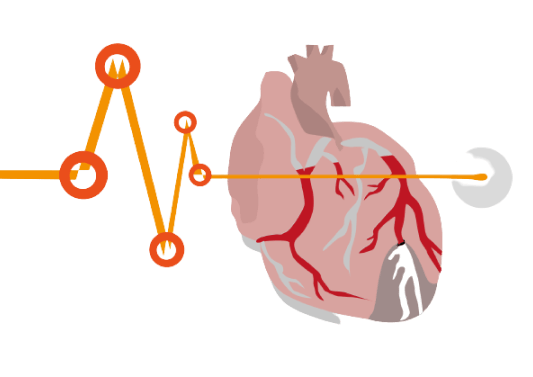Heart diseases (also called Cardiovascular Diseases (CVDs)) are one of the most common causes of death. Moreover, many youngsters to have are now reported a heart attack in their 30s, owing largely to the stressful and unhealthy lifestyle. Hence, we should address heart-related medical issues and spread awareness on World Health Day to prevent, promote and treat heart diseases.
We understand how serious these heart diseases can be, if left undetected and untreated. We help you understand different heart diseases, their causes and symptoms. This can help you know the kind of lifestyle and health changes required to prevent future problems.
It is the most common heart-related issue, called myocardial infarction, commonly known as a heart attack. In this situation, the patient’s heart muscles don’t get sufficient oxygen supply to function due to diminished flow of blood. Sometimes, a sudden total block may also cause serious complications

Symptoms of a heart attack can be mild or severe. In some cases there may be no symptoms or it may mimic other diseases. Some of the common symptoms are –
The main reason for the oxygen supply cut-off is a slow plaque (cholesterol and fat with or without calcium deposits) build-up within the coronary arteries. The block can also be due to blood clots.
The effect may be
It is a medical condition where the heart cannot pump blood the way it should. Here, the heart does not stop beating entirely; it continues to pump blood, but the heart has to work harder to pump blood and thus its ability to function decreases. If untreated it can lead to shortness of breath and fatigue and reduce your physical activity. The heart tries to improve its function but at some point may get exhausted by this effort and fail

Heart failure can be sudden or ongoing.
Its symptoms include –
Heart failure is generally a result of a weakened, damaged, or stiff heart.
The most common causes of heart failure are –
Ischemic Stroke happens when an artery connecting to the brain is blocked. If an artery responsible for bringing blood to the brain from the heart and lungs gets blocked, the brain will not have enough energy to function properly and will eventually stop working altogether. The Stroke can be further divided into two types, i.e., Thrombotic and Embolic.

Haemorrhagic Stroke can show various symptoms in a person –
Stroke is likely to occur due to the following reasons:
Heart valve complications can occur due to various abnormalities.
Regurgitation complication is when the heart valves don’t close properly and promotes blood leakage. Similar to the arteries, heart valves have to function effectively to prevent any problems.
Stenosis is when the heart valves don’t open enough. This restricts the normal blood flow and causes further problems.

If there is any complication in your heart valve, you might witness one or more of the following symptoms –
Heart valves can be congenital diseases or may occur in adults due to underlying conditions, such as other heart problems or infections. The causes of heart valve complications are –
Arrhythmia is when there’s an abnormal heart rhythm. It might feel too fast, too slow, or with an irregular tempo or beat. If the rhythm isn’t proper, the heart stops working effectively. It might be unable to pump sufficient blood and deliver oxygen to other body parts.

Arrhythmia might not show any signs or symptoms. A doctor might witness it while checking for other problems. Yet, some common symptoms are –
Arrhythmia can be caused due to multiple reasons –
These are some of the most common heart conditions that are pretty serious and should always be aware of. Look if you have the symptoms and reach out to your doctor if you experience them. Let’s pledge that we will be fully aware of all the common heart conditions and take precautionary measures to keep them at bay. Help Yourself and Others By Being Aware!